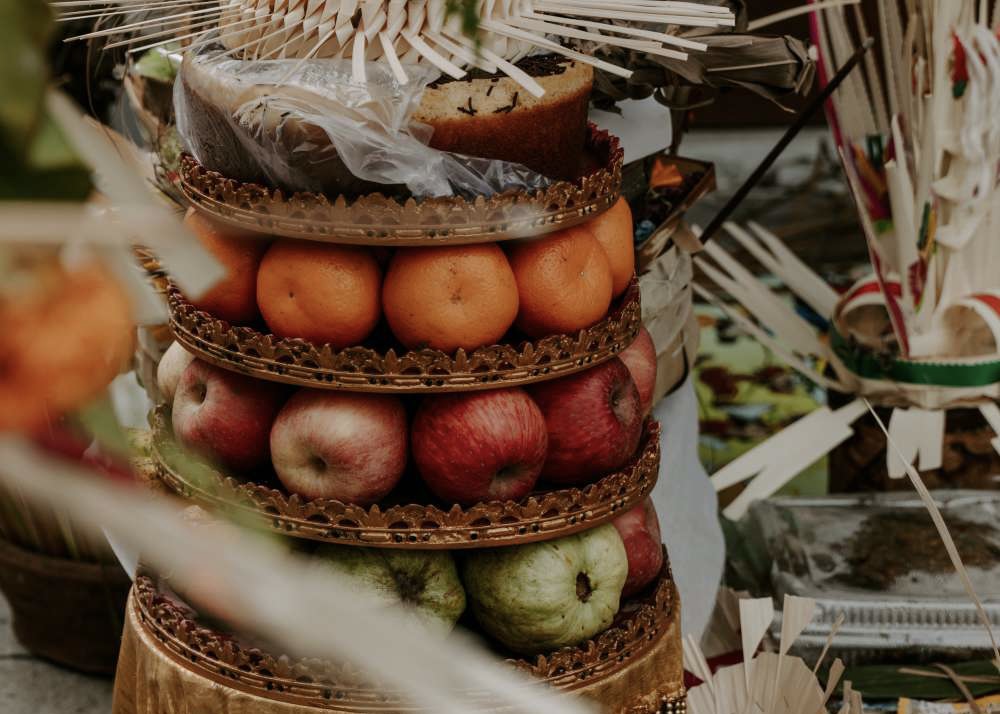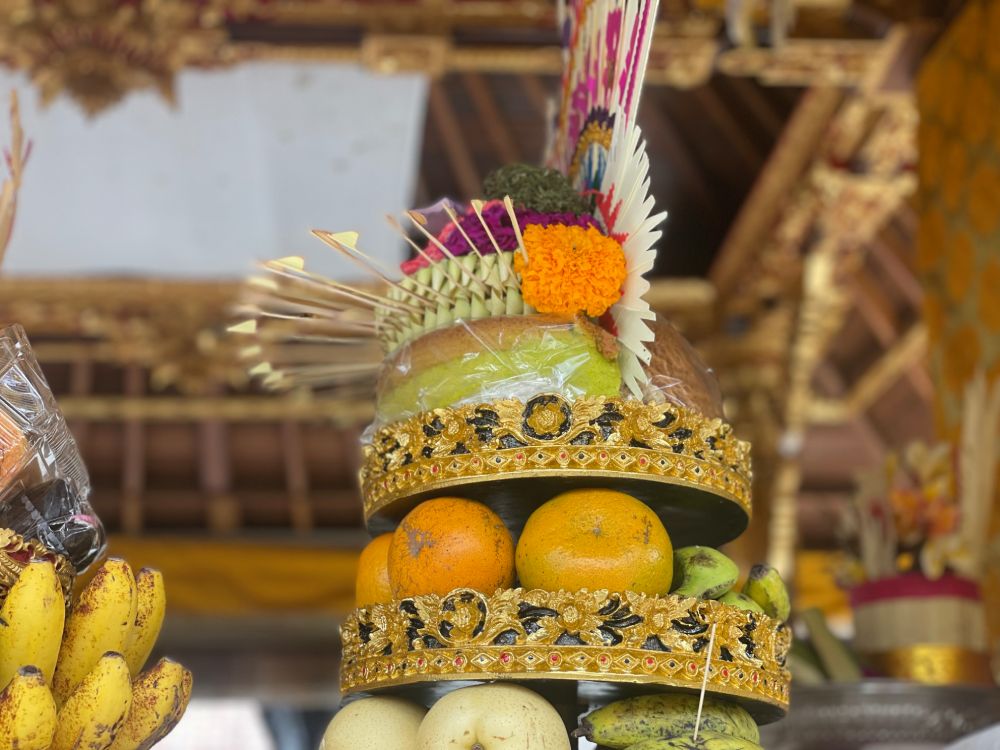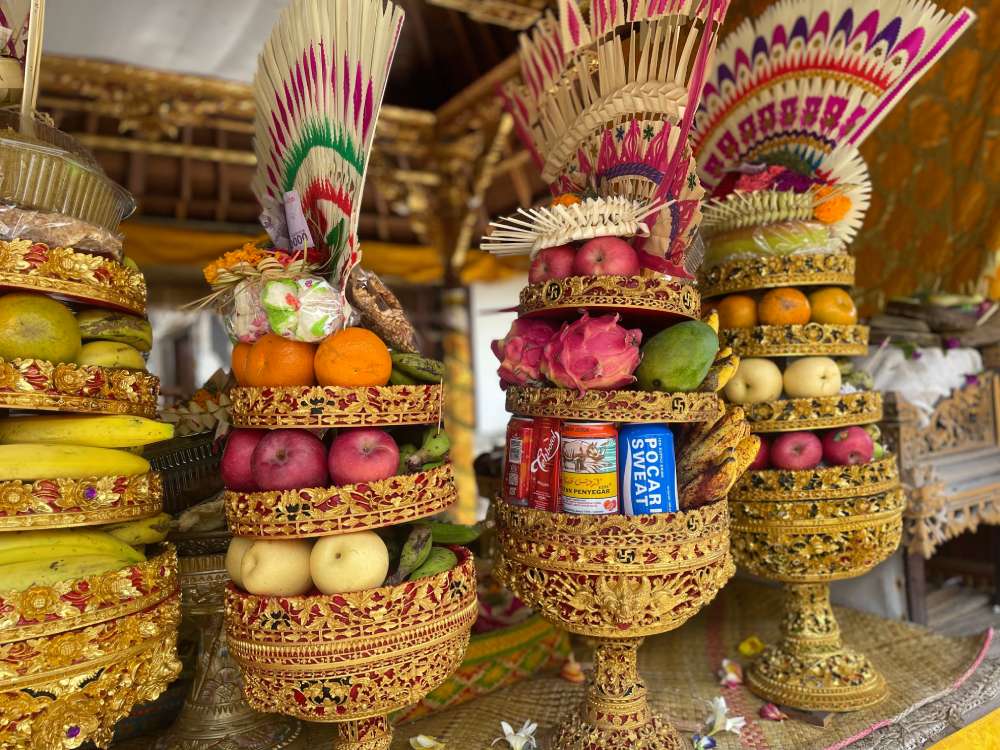
Gebogan is a traditional offering used during religious ceremonies, festivals, and other important occasions. It is one of Bali’s most eye-catching offerings, tall and colourful, with various fruits and flowers arranged into a tower. During certain ceremonies the gebogan are carried upon the heads of women in long procession (known as Mapeed), making for a true visual feast.
The offerings are typically prepared by women, who carefully select the items to include in the Gebogan based on their colour, shape, and symbolic meaning. The structure of the Gebogan — a towering, cone-shaped structure — is made up of several layers, each of which is arranged in a specific order and contains a different set of items. The base layer is usually made up of fruits and vegetables, such as bananas, oranges, and cucumbers, which are arranged in a circular pattern. The second layer is often composed of flowers, such as frangipani, jasmine, and marigolds, which are arranged in a way that creates a beautiful and harmonious display of colours and shapes.


Nothing is without meaning in Bali, and the same goes for the Gebogan. Cultural contributor Jean Couteau explains its intricate symbolism further:
“Their shape, long and “conical” with a round top, evokes the phallic symbol of Siwa, as well as the related cosmic mountain. But their components too – fruits, cake, flowers, meat – are each related to gods and cosmic functions. On top of the gebogan itself are other offerings that also carry each a cosmic signification: a round-shaped sampiang, symbol of the pangider-ider (Balinese “rose of the wind”); and above the sampiang, a small canang offering, a symbol, by its colours, of the rose of the wind too, and, by its porosan (heart), of the Trimurti (gods) Brahma, Wisnu, Iswara. I should add that the flowers of the offerings addressed – on the ground —to demonic (earthly) forces are also laden with cosmic symbolism.”
Gebogan are seen at many ceremonies, brought individually to the temple by worshippers as offerings to the deities and ancestors. But it is during larger ceremonies that they are at their most impressive: the best time to see them is during the melasti cleansing rituals prior to Nyepi, Bali’s Day of Silence. All across the island, groups will travel from village temple to the sea or river in long processions known as mapeed. They bring their holy effigies to be cleansed, carried upon the heads of women, shaded under tedung ceremonial umbrellas. The vibrant gebogan offerings are much a part of this procession, adding colour and life to an already lively scene.






